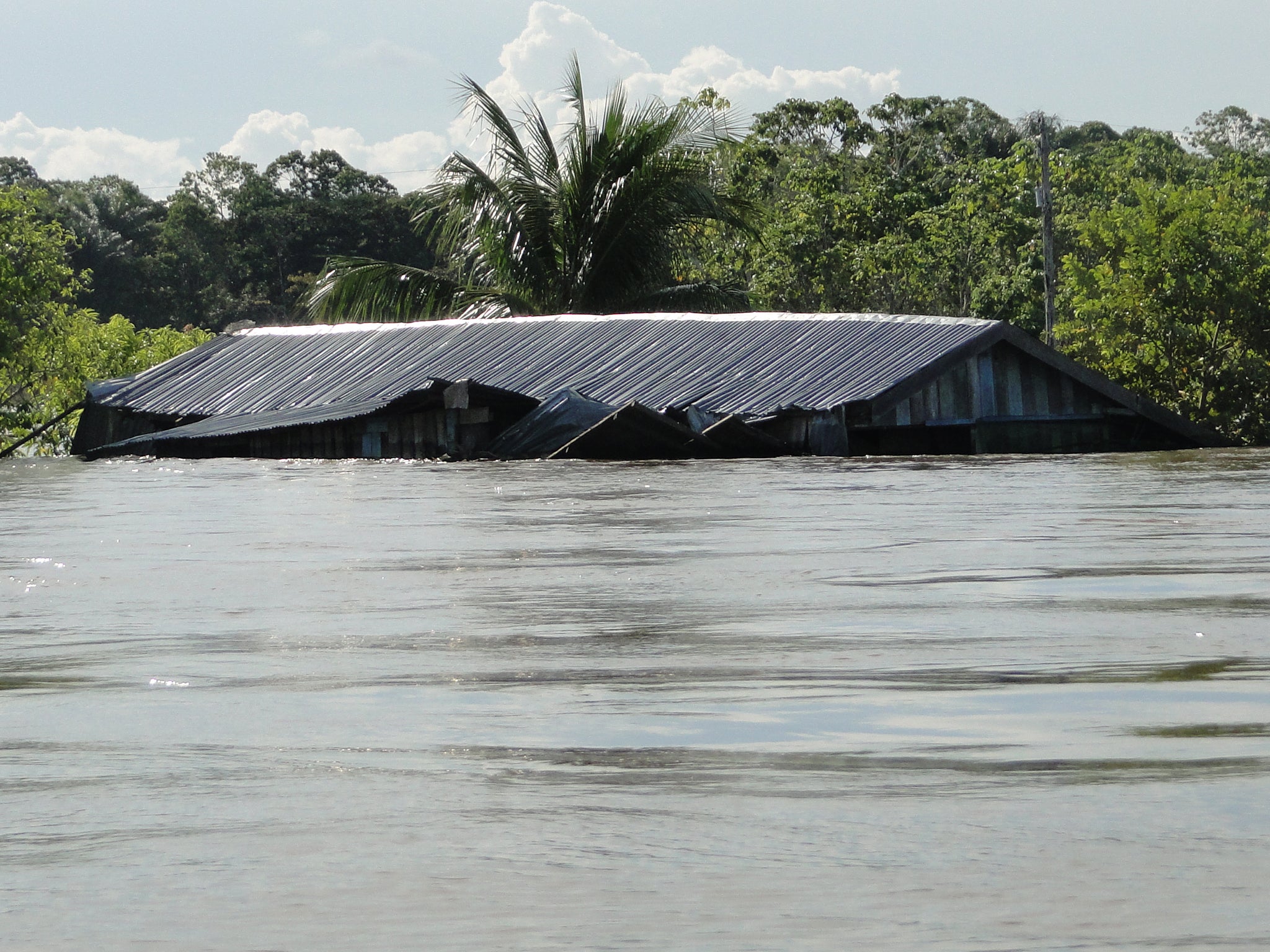Flood frequency of world’s largest river has increased fivefold, study finds
'With a few minor exceptions, there has been extreme floods in the Amazon basin every year from 2009 to 2015'

Your support helps us to tell the story
From reproductive rights to climate change to Big Tech, The Independent is on the ground when the story is developing. Whether it's investigating the financials of Elon Musk's pro-Trump PAC or producing our latest documentary, 'The A Word', which shines a light on the American women fighting for reproductive rights, we know how important it is to parse out the facts from the messaging.
At such a critical moment in US history, we need reporters on the ground. Your donation allows us to keep sending journalists to speak to both sides of the story.
The Independent is trusted by Americans across the entire political spectrum. And unlike many other quality news outlets, we choose not to lock Americans out of our reporting and analysis with paywalls. We believe quality journalism should be available to everyone, paid for by those who can afford it.
Your support makes all the difference.Flooding on the Amazon River has increased fivefold over the last two or three decades, a new study has found.
Analysis of more than 100 years of river level records from the Amazon showed that both floods and droughts had become more frequent.
Taken in the Brazilian port city of Manaus since the start of the 20th century, records show that severe floods with water levels exceeding 29 metres – the benchmark for a state of emergency to be declared in the area – occurred roughly every 20 years.
Currently, extreme floods occur on average every four years, according to the study published in the journal Science Advances.
“What really stands out from this long-term river record is the increase in the frequency and severity of the floods," said the study's lead author, Dr Jonathan Barichivich, from Universidad Austral de Chile. "With a few minor exceptions, there has been extreme floods in the Amazon basin every year from 2009 to 2015."
Previously research has always focused on droughts, instead of flooding, he said.
The increased flooding is linked to a strengthening of the Walker circulation – an ocean-powered system of air circulation caused by differences in temperature and pressure over the tropical oceans, the study says.
This system influences weather patterns and rainfall across the tropics and beyond.
Co-author Professor Manuel Gloor, from the School of Geography at Leeds, said the increase in floods is caused by changes in the surrounding sea.
“Due to a strong warming of the Atlantic Ocean and cooling of the Pacific over the same period, we see changes in the so-called Walker circulation, which affects Amazon precipitation,” he said. “The effect is more or less the opposite of what happens during an El Niño event. Instead of causing drought, it results in more convection and heavy rainfall in the central and northern parts of the Amazon basin.”
The ultimate underlying cause for the warming of the Atlantic is not entirely clear. However, in addition to natural variability, global warming is at least partially responsible but in an unexpected and indirect way, the study states.
Extreme flooding of the Amazon river can last for many weeks and have disastrous consequences. It can contaminate water supply and spread disease, as well as destroy homes and livelihoods.
Economic activities in the floodplains such as agriculture a cattle ranching are strongly affected.
The paper also noted that deforestation and construction of hydro-power plants could play a role in water-level changes.
Monitoring changes in river levels is important because the Amazon basin and its tropical rainforest play a major role in the world’s hydrological and carbon systems, said Dr Barichivich.
Subscribe to Independent Premium to bookmark this article
Want to bookmark your favourite articles and stories to read or reference later? Start your Independent Premium subscription today.
Join our commenting forum
Join thought-provoking conversations, follow other Independent readers and see their replies
Comments